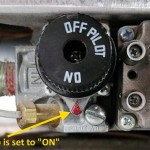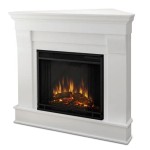How to Install a Gas Log Fireplace: A Comprehensive Guide
Installing a gas log fireplace can provide the ambiance and warmth of a traditional fire without the hassle of wood. However, it is a project that demands precision and adherence to safety regulations. Improper installation can lead to carbon monoxide leaks, gas explosions, or other hazardous situations. Therefore, understanding the necessary steps, safety precautions, and required materials is crucial before embarking on this project. This article provides a detailed guide on how to install a gas log fireplace, covering essential aspects from preparation to final testing.
Before initiating the installation process, it is imperative to confirm that the existing fireplace and chimney are in good working order. The fireplace should be thoroughly cleaned, removing any accumulated soot, debris, or creosote. A professional chimney sweep can perform this task and inspect the chimney for any structural damage or obstructions. The chimney liner must be appropriate for gas appliances; unlined masonry chimneys are typically not suitable and can lead to the buildup of corrosive byproducts.
Different types of gas logs are available, primarily vented and vent-free. Vented gas logs require an operational chimney for proper ventilation, while vent-free logs burn cleaner and can be used without a functioning chimney, although proper room ventilation is still necessary. The type of gas log selected will significantly influence the installation process and required clearances. Furthermore, the gas supply line must be compatible with the type of gas used (natural gas or propane) and sized appropriately to deliver the required BTU output for the gas log set.
1. Preparing the Fireplace and Gas Supply
The first critical step involves preparing the existing fireplace. All grates, ash traps, and other non-essential components should be removed. The fireplace floor must be level and clean to ensure the gas log set sits properly. If the existing fireplace floor is uneven or damaged, it may need to be repaired or replaced before proceeding. Consider consulting a qualified mason for significant repairs.
Next, the gas supply line needs to be addressed. If a gas line is not already present at the fireplace, one will need to be installed by a licensed gas fitter. This is a critical step that should never be attempted by anyone unqualified. The gas line must be installed according to local building codes and regulations, including proper pipe sizing, shut-off valves, and pressure testing. The gas supply line should terminate with a shut-off valve within the fireplace opening, easily accessible for maintenance and emergency situations.
If an existing gas line is present, it needs to be inspected for leaks and proper operation. A gas leak detector should be used to check all connections. If any leaks are detected, the gas supply should be shut off immediately, and a qualified gas fitter should be called to repair the leak before proceeding. The shut-off valve should be easily accessible and function smoothly.
Proper venting is another crucial aspect. For vented gas logs, the damper must be permanently fixed in the open position. This can be achieved by removing the damper entirely or by using a damper clamp to secure it open. This ensures adequate ventilation and prevents the buildup of carbon monoxide. For vent-free gas logs, while a fully functional chimney is not required, adequate room ventilation is still paramount. Following the manufacturer’s recommendations for room size and ventilation requirements is critical to safe operation.
Finally, ensure compliance with all local building codes and regulations. A permit may be required for gas line installation or modifications. Contacting the local building department before commencing the installation is advisable to avoid potential fines or safety violations.
2. Installing the Gas Log Set
Once the fireplace and gas supply are prepared, the installation of the gas log set can commence. The gas log set typically includes the burner assembly, the decorative logs, and the control valve. Carefully unpack all components and refer to the manufacturer's instructions for specific installation guidelines.
The burner assembly is the heart of the gas log set and must be installed correctly. Position the burner assembly in the fireplace according to the manufacturer's instructions. Ensure that the burner is level and stable. Connect the burner assembly to the gas supply line using a flexible gas connector approved for use with gas appliances. Apply pipe thread sealant specifically designed for gas lines to all threaded connections to prevent leaks. Tighten all connections securely, but avoid over-tightening, which can damage the fittings.
After connecting the burner assembly to the gas supply, perform a leak test using a gas leak detection solution. Apply the solution to all gas connections, including the shut-off valve, the flexible connector, and the burner assembly connections. If bubbles appear, indicating a leak, tighten the connection further and retest. If the leak persists, shut off the gas supply and consult a qualified gas fitter to resolve the issue.
With the burner assembly properly installed and leak-tested, the decorative logs can be arranged. The logs should be arranged according to the manufacturer's instructions, ensuring that they are positioned correctly over the burner assembly. Proper log placement is crucial for achieving a realistic flame pattern and preventing incomplete combustion. The logs should not obstruct the burner ports or interfere with the proper operation of the burner.
Install the control valve according to the manufacturer's instructions. The control valve typically allows for adjusting the flame height and turning the gas log set on and off. Ensure that the control valve is easily accessible and operates smoothly. If the gas log set includes a remote control, follow the manufacturer's instructions for pairing the remote with the control valve.
3. Testing and Safety Checks
After the gas log set is installed, thorough testing and safety checks are essential to ensure proper operation and prevent potential hazards. Begin by turning on the gas supply at the shut-off valve. Light the gas log set according to the manufacturer's instructions. Observe the flame pattern to ensure that it is uniform and consistent. The flames should be blue with yellow tips, indicating proper combustion. If the flames are primarily yellow or orange, this may indicate incomplete combustion, which can produce carbon monoxide.
Use a carbon monoxide detector to check for any carbon monoxide leaks. Position the detector near the fireplace and monitor it for several minutes. If the detector indicates elevated levels of carbon monoxide, shut off the gas supply immediately and ventilate the area. Consult a qualified HVAC technician to inspect the installation and identify the source of the leak.
Inspect all gas connections again for leaks using a gas leak detection solution. Even after the initial leak test, it is important to recheck all connections after the gas log set has been operating for a few minutes. This ensures that no leaks have developed due to thermal expansion or vibration.
Verify that the venting system is functioning correctly. For vented gas logs, ensure that the damper is fully open and that there is adequate airflow through the chimney. For vent-free gas logs, ensure that the room has adequate ventilation, as specified by the manufacturer. Open a window or door slightly to allow for fresh air circulation.
Finally, educate all household members on the safe operation of the gas log fireplace. Explain the importance of keeping flammable materials away from the fireplace, the proper procedures for lighting and extinguishing the gas log set, and the symptoms of carbon monoxide poisoning. Ensure that everyone knows the location of the carbon monoxide detector and how to respond if it alarms.
4. Maintaining Your Gas Log Fireplace
Regular maintenance is key to ensuring the longevity and safety of your gas log fireplace. At least once a year, before the heating season begins, a thorough inspection and cleaning should be performed. Shut off the gas supply before performing any maintenance.
Clean the burner assembly with a soft brush to remove any dust, debris, or soot that may have accumulated. Clean the burner ports with a small needle or wire to ensure that they are not blocked. Inspect the gas connections for any signs of corrosion or damage. If any damage is found, replace the affected components immediately.
Inspect the decorative logs for any cracks or damage. If the logs are cracked, they should be replaced to prevent incomplete combustion. Clean the logs with a soft cloth to remove any dust or soot. Avoid using harsh chemicals or abrasive cleaners, as these can damage the logs.
Check the control valve to ensure that it is operating smoothly. Lubricate the valve with a silicone-based lubricant if necessary. Inspect the remote control (if applicable) and replace the batteries as needed.
Have the chimney inspected and cleaned annually by a qualified chimney sweep. This is particularly important for vented gas logs, as a buildup of soot or creosote can obstruct the chimney and lead to carbon monoxide poisoning. The chimney sweep can also identify any structural damage to the chimney and recommend necessary repairs.
By following these guidelines and adhering to all safety precautions, the installation of a gas log fireplace can be a safe and rewarding project, providing years of warmth and enjoyment. However, if any part of the installation process feels overwhelming or uncertain, it is always best to consult with a qualified professional.

How To Select And Install A Gas Fireplace Log Set Fireplaces Direct Learning Center

How To Select And Install A Gas Fireplace Log Set Fireplaces Direct Learning Center

How To Put In A Gas Log Set For Fireplace

How To Install Gas Logs 13 Steps With S Wikihow

How To Install Gas Logs 13 Steps With S Wikihow

We Install Gas Logs Amarillo Tx West Chimney

Installing Vent Free Gas Log Set

Can I Install Gas Logs In My Existing Fireplace Thomas Bros Propane
.png?strip=all)
How To Install A Log Lighter Fireplace Gas Starter Pipe

How To Install Gas Logs 13 Steps With S Wikihow
Related Posts








